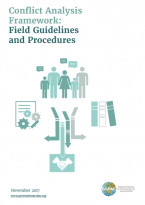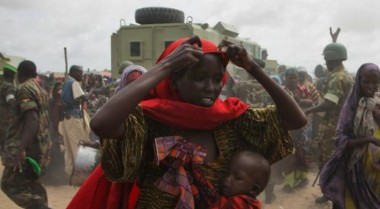
Conflict Analysis Framework: Field Guidelines and Procedures
This document represents a framework and practical guidelines for conflict analysis that members of the GPPAC network and various other organisations can adapt and localise to fit their respective contexts and organisational needs. We call it the ‘Conflict Analysis Field Guide’ in brief. It was developed by members of GPPAC’s Preventive Action Working Group and partners to support Civil Society Organisations (CSOs) and practitioners with the following objectives:
- To strengthen CSOs’ capacity for conflict analysis as a basis for preventive action.
- To promote self-assessment and conflict sensitivity.
- To inform programming/project planning, whether it be direct intervention or advocacy to mobilise other actors.
Download the full publication below or download the handbook per chapter:
1. Acknowledgements and Introduction
This Guide is the result of an accumulative process which started in collaboration with the CDA Collaborative Learning Projects and the Norwegian Church Council in 2011, having since been tested and updated by GPPAC members and staff. Section 1 discusses some definitions and conceptual frameworks towards a better understanding of the topic of conflict analysis. It introduces a set of guiding principles and gender considerations that can serve as good practice standards.
2. Getting Started & Preparations
Section 2 guides you through the key considerations and practicalities for getting started and preparing a conflict analysis exercise. This includes thinking through the purpose and scope of the analysis, preparing a desk review for your preliminary analysis, as well as considering the resources required to follow it through.
3. Putting a Team Together
Section 3 looks at the skills and group dynamics when putting a team together or when working in partnership with other agencies. It encourages self-reflection on the part of the analysts, by considering how the analysts themselves have an effect on the research and analysis process.
4. Gathering information
Section 4 provides guidance on data collection techniques, including choices about what information to gather and whom to approach. It introduces a number of specific considerations for different phases of conflict.
5. Choosing the Methods and Tools
Section 5 is about how to make sense of the information you have gathered, with an introductory overview of the range of tools, frameworks and processes to sort, analyse and validate your findings.
6. Tools & Templates
Section 6 presents a number of conflict analysis tools, including templates, guidelines and examples for their practical use. Each tool or method starts with a description, a purpose and suggestions of the circumstances in which the tool might be particularly helpful.
Appendix: Interview Questions
Bibliography
Click here to read the Conflict Analysis Framework in Russian.



